
Las piedras de nacimiento de agosto: el doble encanto del peridoto y la espinela
Las dos piedras natales tradicionales de agosto son el impresionante peridoto y la espinela. El peridoto es una gema de color amarillo verdoso, mientras que la espinela se presenta en varios colores, a menudo confundidos con otras gemas.
El mes recibió el nombre de agosto en el año 8 a. C. en honor al emperador romano César Augusto, elegido por él para conmemorar sus triunfos anteriores durante agosto. Anteriormente, se llamaba Sextilis , que significa «sexto», cuando marzo daba comienzo al año.
Muchos festivales antiguos que se celebraban durante agosto estaban relacionados con las cosechas, la seguridad y las oraciones para que el cambio de estación fuera pacífico.
Agosto se asocia con la abundancia, la protección y la regeneración. ¡Muchos de estos rasgos también se aprecian en las piedras natales de agosto!
Hoy profundizaremos en la historia, los significados, los poderes y el valor de las piedras natales de agosto: el peridoto y la espinela. También hablaremos de algunas piedras natales alternativas e ideas de regalo.
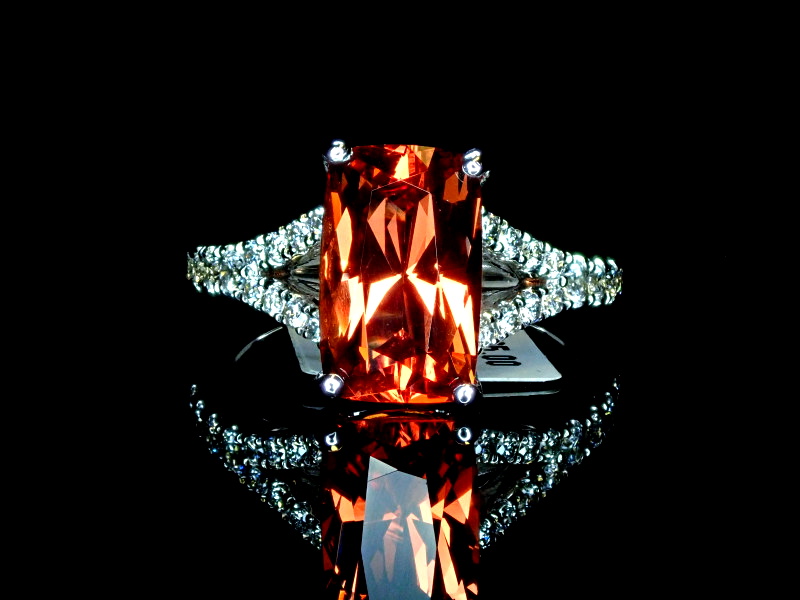 En la imagen de arriba: Anillo de espinela naranja
En la imagen de arriba: Anillo de espinela naranja
Importancia histórica y cultural de las piedras natales de agosto
Técnicamente, agosto tiene tres piedras de nacimiento : peridoto, espinela y sardónice .
¿Por qué hay 3 piedras de nacimiento para agosto? Primero, no todas las listas tienen tres piedras de nacimiento de agosto. Segundo, las piedras de nacimiento han cambiado con el tiempo.
Entonces, ¿cuándo cambió la piedra de nacimiento de agosto?
Ya en los siglos I y V d. C., las primeras listas de piedras de nacimiento se inspiraron en listas bíblicas de 12 gemas. En estas listas, la piedra de nacimiento de agosto era la cornalina o la sardónice.
En 1870, Tiffany & Co publicó un folleto de poemas sobre piedras de nacimiento con sardónice para agosto.
La primera lista estandarizada fue creada por la Asociación Nacional de Joyeros (ahora Joyeros de América) en 1912. Esta lista tenía al sardónice como la piedra de nacimiento principal de agosto, con el peridoto como alternativa.
En 1937, la Asociación Nacional de Orfebres publicó una lista con prioridad invertida: peridoto primario, sardónice alternativa.
Posteriormente, la lista de 1912 se modificó cuando la Asociación Americana de Comercio de Gemas colaboró con Jewellers of America. Uno de los cambios fue añadir la espinela para agosto de 2016.
Por eso en la guía de hoy nos centraremos en el peridoto y la espinela.
Una vez cubierta la historia de las piedras de nacimiento, nos sumergiremos a continuación en la historia individual de estas gemas.
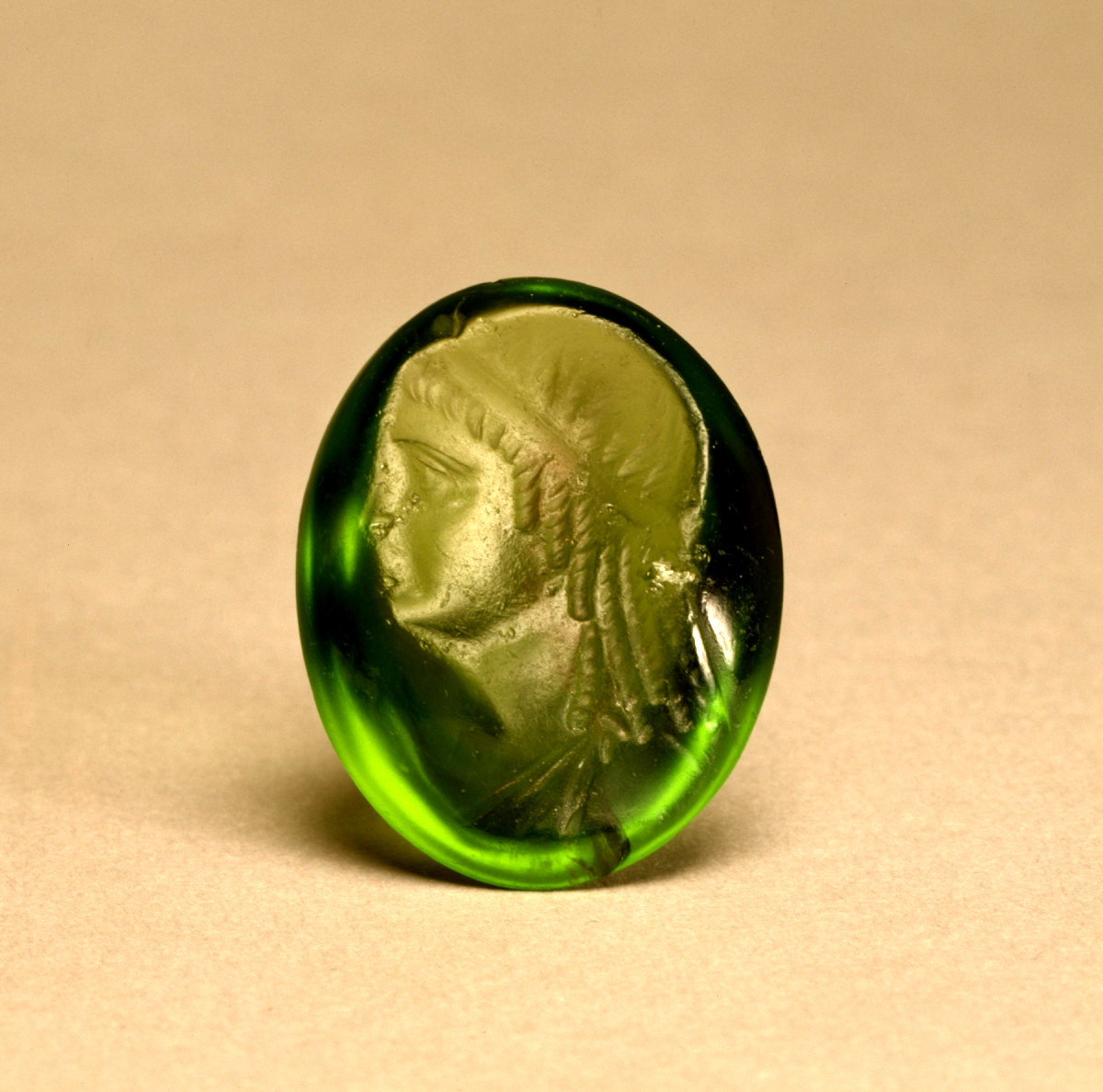 En la imagen superior: Retrato en calcografía de peridoto de Cleopatra II, entre el 175 y el 115 a. C. (helenístico-ptolemaico) | Crédito de la imagen: Museo de Arte Walters, dominio público
En la imagen superior: Retrato en calcografía de peridoto de Cleopatra II, entre el 175 y el 115 a. C. (helenístico-ptolemaico) | Crédito de la imagen: Museo de Arte Walters, dominio público
La rica historia del peridoto en las culturas antiguas
La historia del peridoto comienza en el antiguo Egipto .
Los primeros registros de la minería de peridoto se remontan al año 1500 a. C., cuando los antiguos egipcios encontraron la piedra de nacimiento de agosto en Topazios (ahora llamada Isla de San Juan o Zabargad).
Cleopatra creía que el peridoto protegía contra las fuerzas del mal y los sacerdotes egipcios bebían de copas incrustadas con peridoto para comunicarse con los dioses de la naturaleza.
Las antiguas leyendas hawaianas conectan el peridoto con Pelé, la diosa del fuego y los volcanes. Algunos mitos dicen que los peridotos son las lágrimas de Pelé. Otros afirman que las piedras de nacimiento son dones curativos de Pelé.
Históricamente, el peridoto se ha mezclado con muchas piedras .
El nombre original, « crisólito », podría ser en parte responsable. «Crisólito» y « topacio » se usaban para las piedras de crisoberilo , peridoto y prehnita de Topazios.
Otra confusión que duró siglos fue entre peridoto y esmeralda .
De hecho, los antiguos romanos llamaban al peridoto “esmeralda vespertina”. Algunos historiadores creen que la colección de esmeraldas de Cleopatra en realidad estaba compuesta por peridotos.
Otros ejemplos famosos de peridotos confundidos con esmeraldas incluyen:
Las gemas de 200 quilates del santuario de los Tres Reyes Magos en la Catedral de Colonia, Alemania
El collar de la emperatriz francesa Josefina Bonaparte, regalo de su marido, el emperador Napoleón (¡Napoleón nació en agosto!).
Sin embargo, ninguna gema lleva el título de “impostora” más que la espinela.
 Imagen superior: Detalle del rubí de Timur de una pintura del maharajá Sher Singh, de August Schoefft, ca. 1841-1842 | Crédito de la imagen: August Schoefft, dominio público
Imagen superior: Detalle del rubí de Timur de una pintura del maharajá Sher Singh, de August Schoefft, ca. 1841-1842 | Crédito de la imagen: August Schoefft, dominio público
Las intrigantes conexiones y confusiones históricas de Spinel
Gran parte de la historia de la espinela tiene que ver con su confusión con piedras preciosas , en particular con el zafiro y el rubí .
Históricamente, el término «rubí» se usaba a menudo para designar todas las gemas rojas . Cuando los rubíes importados se introdujeron en Europa en la Edad Media, las espinelas de Afganistán se denominaban « rubíes balas ».
Hasta el siglo XIX, la realeza europea competía por los “rubíes Balas”, aunque algunos eruditos medievales los categorizaban como distintos de los rubíes verdaderos.
Ejemplos notables de espinelas confundidas con rubíes son el Rubí del Príncipe Negro y el Rubí Timur.
El Rubí del Príncipe Negro perteneció inicialmente al príncipe granadino del siglo XIV, Abu Said Faraj. Finalmente, lo adquirió el "Príncipe Negro" Eduardo de Woodstock. Se convirtió en la piedra central de la Corona Imperial del Estado, utilizada en la coronación de la reina Victoria en 1838.
El rubí de Timur (en la foto de arriba) debe su nombre al gobernante timúrida Timur, de quien se cree erróneamente que lo tomó al invadir Delhi en 1398. La propiedad pasó entre varios gobernantes mogoles y sijs hasta que la Compañía de las Indias Orientales lo tomó en 1849.
Se lo regalaron a la reina Victoria en 1851. Ella lo engastó en un collar de Garrards en 1853.
Afortunadamente, las espinelas han ganado lentamente reconocimiento como hermosas piedras preciosas y versátiles piedras de nacimiento de agosto.
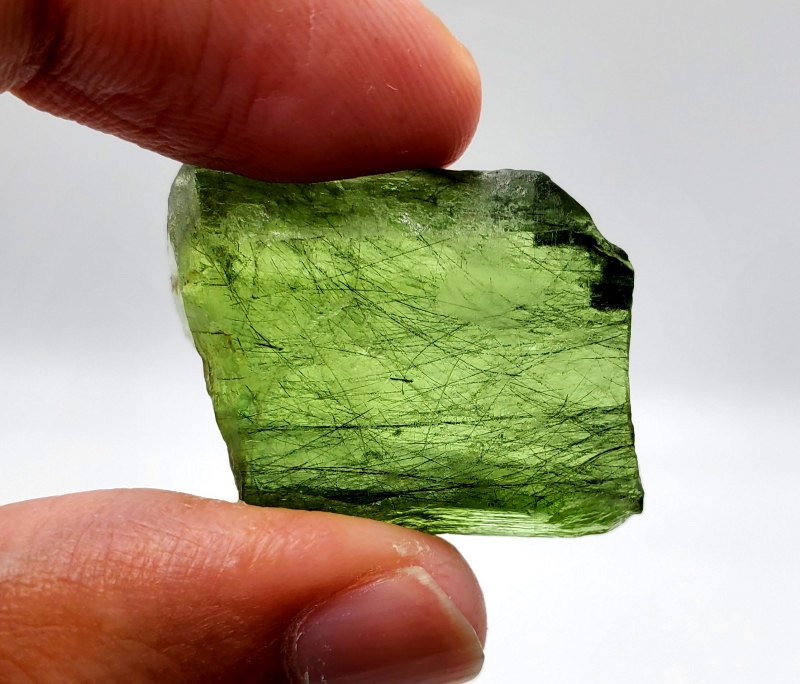 En la imagen de arriba: Peridoto en bruto con inclusiones en forma de aguja.
En la imagen de arriba: Peridoto en bruto con inclusiones en forma de aguja.
Maravilla geológica: Los orígenes del peridoto y la espinela
Comenzando con el peridoto , esta piedra de nacimiento de agosto es un silicato de hierro y magnesio y la forma de piedra preciosa de olivino (a veces llamada crisotilo).
El peridoto se encuentra a menudo en peridotitas. Sin embargo, lo más notable es que algunos cristales de peridoto son extraterrestres y se encuentran en antiguos meteoritos de hierro pétreo llamados pallasitas y polvo de cometas.
Hoy en día, la mayoría de los cristales de peridoto provienen de Arizona (EE. UU.), Myanmar (Birmania), Pakistán y Sri Lanka. Myanmar y Egipto producen los peridotos facetados más grandes.
Pasando a la espinela , esta piedra natal de agosto es un óxido de magnesio y aluminio, perteneciente al subgrupo de los óxidos de aluminio isométricos. Otras piedras de este grupo incluyen la magnetita y la gahnita, pero la espinela es el único miembro del grupo que se usa comúnmente en joyería.
Aunque las espinelas se forman en rocas anfitrionas, los mineros generalmente las encuentran en depósitos aluviales, donde el agua ha erosionado la roca y arrastrado las gemas río abajo, a menudo redondeando los cristales en el camino.
Las piedras de nacimiento de espinela se encuentran en todo el mundo, pero las principales fuentes de especímenes con calidad de gema son Afganistán, Myanmar y Sri Lanka.
 En la imagen de arriba: piedra preciosa de peridoto facetada
En la imagen de arriba: piedra preciosa de peridoto facetada
Tonos de verde y más allá: el resplandor del peridoto
El peridoto es una de las pocas piedras preciosas definidas por su color verde, pero los colores de esta piedra natal de agosto en realidad varían del verde puro al verde amarillento y al verde marrón.
¿Por qué es verde la piedra natal de agosto? El peridoto es idiocromático, por lo que su color verde se debe al hierro ferroso (Fe₂+) presente en su fórmula mineral.
El hierro férrico (Fe₃₄) puede aportar matices amarillos, mientras que el cromo puede intensificar los tonos verdes. El contenido ideal de hierro es del 12 al 15 %; un valor superior produce colores más marrones y menos valiosos.
Muchas gemas de peridoto se identifican por su origen:
Changbai, China : Verde lima brillante
Hunan, China : Más verde amarillento
Myanmar : Verde medio brillante a oscuro y aceitoso.
Sondmore, Noruega : Verde lima más pálido
Cachemira, Pakistán : Verde manzana o lima, matices dorados.
Zabargad, Egipto : Verde medio intenso
En cuanto a los efectos ópticos , los peridotos rara vez presentan chatoyancia (efecto "ojo de gato") o asterismo (efecto "estrella"). Además, la alta birrefringencia de esta piedra natal de agosto puede provocar duplicación de facetas y borrosidad.
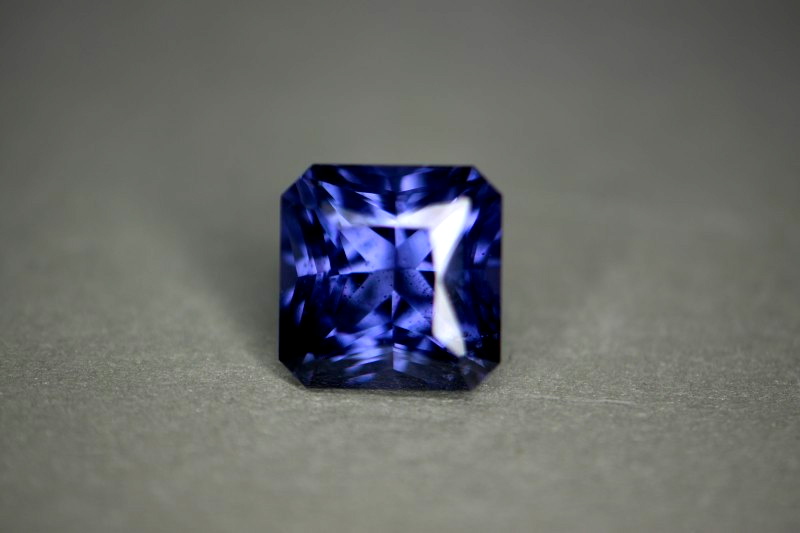 En la imagen de arriba: Espinela violeta facetada
En la imagen de arriba: Espinela violeta facetada
Los múltiples colores de la espinela
Los colores de la espinela, piedra natal de agosto, son muy variados, e incluyen casi todos los colores del arcoíris y matices intermedios. La mayoría de las espinelas son rojas, rosas, naranjas, lilas y azules.
Las impurezas detrás de los colores de esta piedra de nacimiento son:
Cromo, hierro férrico y/o vanadio: rojo, magenta, morado
Cobalto y/o hierro ferroso – azul, violeta azulado, violeta
Vanadio – naranja, rojo anaranjado
Transferencia de carga de hierro ferroso y férrico – verde
Óxido de magnesio y aluminio – negro
Ciertas impurezas y colores han dado lugar a diferentes variedades y nombres comerciales: lea más sobre esto en nuestra Guía de información sobre espinela .
Algunas espinelas de Myanmar presentan asterismo. Con menos frecuencia, pueden cambiar de color , desde azul grisáceo o violeta bajo la luz solar hasta púrpura o violeta rojizo bajo la incandescencia.
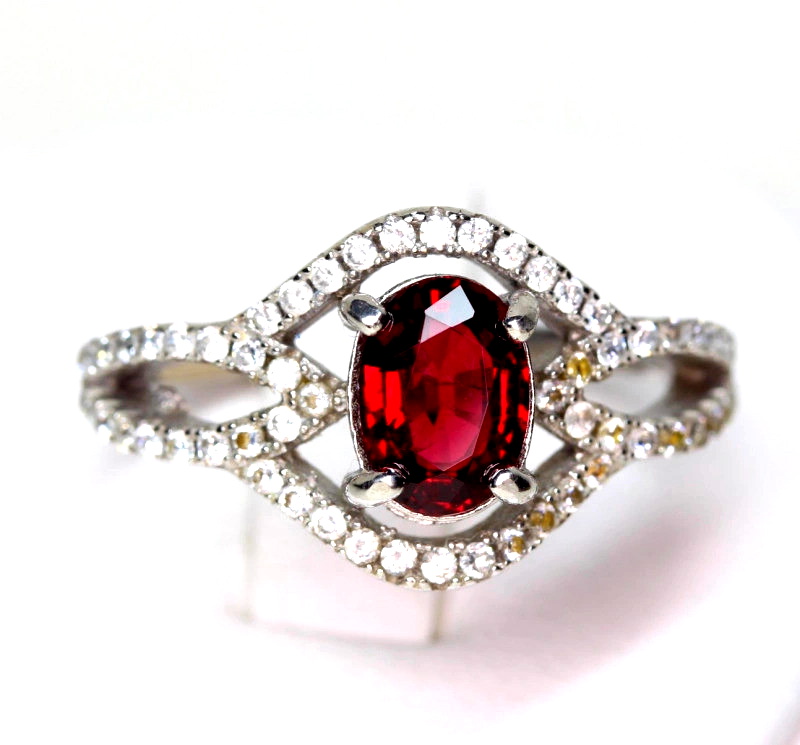 En la imagen de arriba: Anillo de espinela roja
En la imagen de arriba: Anillo de espinela roja
Evaluación de la calidad: características del peridoto y la espinela
La calidad de las piedras de nacimiento de peridoto y espinela se clasifica según el color, la claridad, el corte y el peso en quilates, junto con cualquier tratamiento realizado.
Color
Peridoto : Los peridotos de color verde hierba puro y vibrante suelen ser los más valiosos, seguidos de los de color verde amarillento moderadamente saturado. Los matices amarillos son los más comunes. Los matices marrones son de menor valor.
Espinela : En orden, las espinelas más raras y valiosas son la roja, la azul cobalto, la rosa brillante y la naranja brillante.
Opciones más asequibles (pero igualmente hermosas) son tonos de púrpura como el lavanda, el púrpura azulado y el violeta. Una mayor saturación es más inusual y valiosa.
Claridad
La claridad describe el grado de inclusiones visibles, lo que reduce la transparencia y el valor de una piedra. Tanto el peridoto como la espinela tienen una claridad de Tipo II , lo que significa que los especímenes de alta calidad suelen ser limpios a simple vista (sin inclusiones visibles sin aumento).
Peridoto : Al observar con aumento, muchas gemas de peridoto presentan inclusiones de tipo "nenúfar", lo que dificulta su corte. Lo ideal es tener menos inclusiones.
Espinela : Muchas espinelas presentan filas fascinantes y distintivas de inclusiones cristalinas octaédricas. Las agujas de rutilo alineadas causan el valioso efecto de "estrella".
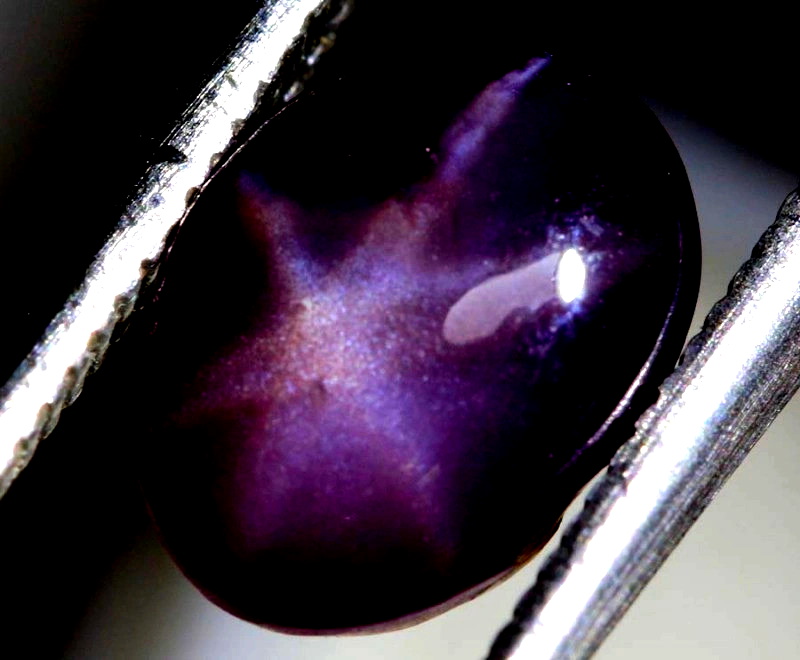 En la imagen de arriba: cabujón de espinela estrella púrpura
En la imagen de arriba: cabujón de espinela estrella púrpura
Cortar
La mayoría de las piedras de nacimiento de agosto, como el peridoto y la espinela, están facetadas . Los ejemplares de estrella u ojo de gato deben tallarse como cabujones .
Peridoto : Los talladores de gemas deben considerar la birrefringencia, la claridad y el color del peridoto al elegir tallas facetadas. Las tallas en damero pueden ocultar inclusiones, pero las tallas brillantes redondas, de pera y ovaladas son las más populares.
Espinela : Los cortes facetados más comunes son ovalados, redondos y en forma de cojín, que maximizan su brillo. La espinela de alta calidad puede cortarse en tamaños no calibrados.
Peso en quilates
Peridoto : El peridoto en bruto de calidad gema rara vez supera los 3 quilates, y la mayoría de las gemas pesan menos de 1 quilate. El precio por quilate de las gemas de más de 3 quilates es significativamente mayor.
Espinela : La mayoría de las espinelas actuales pesan menos de 5 quilates. Las gemas de más de 5 quilates tienen un precio por quilate significativamente más alto, especialmente las espinelas azules, rojas y rosas.
Tratos
Peridoto : Los tratamientos para el peridoto son poco frecuentes, aunque algunos están recubiertos con láminas de metal para mejorar el color y la durabilidad.
Espinela : La mayoría de las espinelas naturales no están tratadas. En raras ocasiones, algunas se someten a un proceso de calentamiento y relleno de fracturas para una mayor claridad. Se pueden realizar diversos tratamientos de difusión para crear colores artificiales como el azul cobalto.
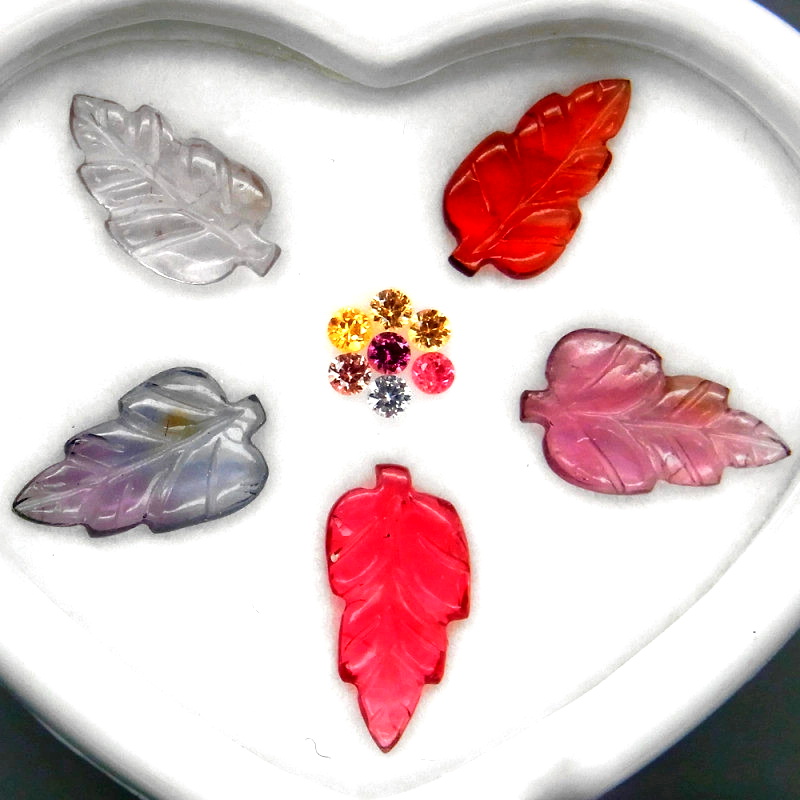 En la imagen de arriba: espinelas talladas alrededor de zafiros facetados.
En la imagen de arriba: espinelas talladas alrededor de zafiros facetados.
Importancia cultural y creencias
El peridoto y la espinela no solo son hermosos: estas piedras de nacimiento de agosto también son significativas metafísicamente.
Peridoto
Históricamente, el peridoto solía estar relacionado con la luz y la protección.
Los antiguos egipcios la llamaban la «gema del sol» y la usaban como protección contra los «terrores de la noche». Algunos antiguos creían que el peridoto provenía de una explosión solar.
El escritor del siglo XVI Heinrich Cornelius Agrippa afirmó que al sostener el peridoto frente al sol, éste reflejaría una estrella dorada que curaba los problemas respiratorios.
Algunos creen que el peridoto disipa las pesadillas, la locura y la pérdida de memoria. Otros afirman que su "resplandor interior" aporta claridad mental y conciencia espiritual.
Hoy en día, la piedra de nacimiento de agosto, el peridoto, simboliza la renovación, la protección y la armonía.
Espinela
Para la espinela, el significado de esta piedra de nacimiento de agosto está ligado al amor y al rejuvenecimiento.
Como piedras curativas , se cree que las espinelas promueven la pasión, la devoción y la felicidad, además de disminuir la ansiedad y equilibrar las emociones.
Los apodos metafísicos para la espinela incluyen:
Piedra de la Esperanza
Piedra de la alegría
Piedra de la Revitalización
Piedra de la Inmortalidad
Espiritualmente, algunos usan la espinela para potenciar la intuición y la comunicación con los reinos celestiales. En Myanmar, los cristales de espinela se llaman nat thwe , que significa "pulidos por los espíritus".
La piedra de nacimiento de agosto también se utiliza para abrir el chakra raíz y revitalizar a quien la usa.
Abastecimiento ético y sostenibilidad
La creciente conciencia en torno a los diamantes en conflicto puede llevar a los consumidores conscientes a preguntarse sobre la ética y la sostenibilidad de la extracción de peridoto y espinela.
Los joyeros tienen una responsabilidad parcial, ya que pueden optar por comprar en minas más pequeñas, independientes y verificadas, con transparencia en su cadena de suministro. La otra responsabilidad recae en los compradores, que pueden optar por comprar piedras de nacimiento de agosto únicamente a joyeros verificados y transparentes.
Afortunadamente, entre el 80 y el 95 por ciento del material de gema de peridoto es extraído exclusivamente por miembros de la tribu Apache en la Reserva Apache de San Carlos en Arizona, EE. UU., una operación independiente abierta a los visitantes.
Muchos joyeros optan por espinelas de Tanzania y Sri Lanka, donde las prácticas mineras son transparentes y no están asociadas con violaciones de los derechos humanos.
Muchos compradores han recurrido a versiones sintéticas de las piedras de nacimiento de agosto, que tienen las mismas propiedades químicas y físicas que el material natural, pero están creadas en laboratorio.
De hecho, las espinelas sintéticas se encuentran entre las gemas creadas en laboratorio más comunes. El peridoto sintético es menos común.
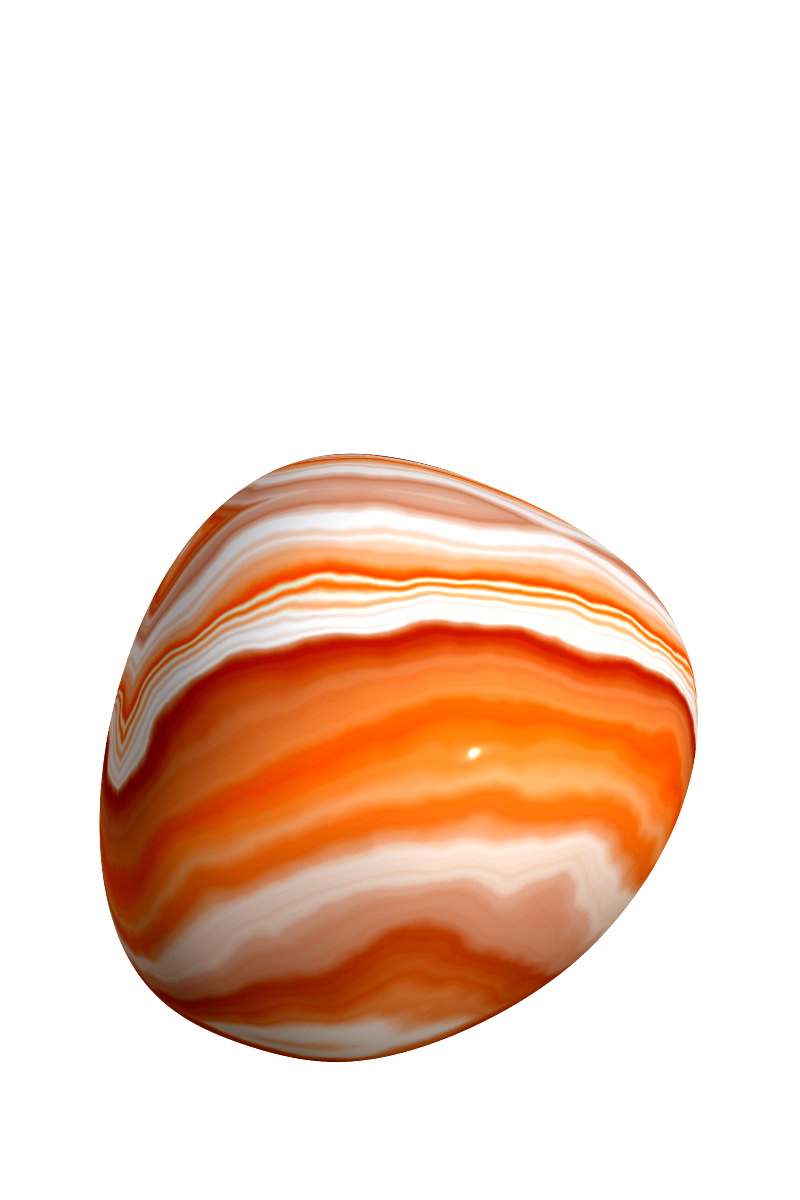 En la imagen de arriba: cabujón de Sardonyx
En la imagen de arriba: cabujón de Sardonyx
Piedras natales alternativas de agosto
Como se mencionó anteriormente, muchas listas incluyen una tercera piedra de nacimiento de agosto, que es la sardónice, una variedad de calcedonia compuesta por capas de sardio y ónix , o cornalina, una variedad de calcedonia similar.
La espinela en sí misma es a menudo un simulador de otras gemas, pero el peridoto tiene muchos simuladores asequibles, como:
Corindón sintético
Prehnita
Astrológicamente, ¿cuál es la piedra de nacimiento de Virgo en agosto? Entre las piedras de nacimiento tradicionales, los Virgo, signo de tierra, podrían preferir un peridoto verde hierba.
¿Cuál es la piedra de nacimiento de Leo ? Los nacidos en agosto podrían preferir la pasión de la espinela, especialmente la roja y ardiente.
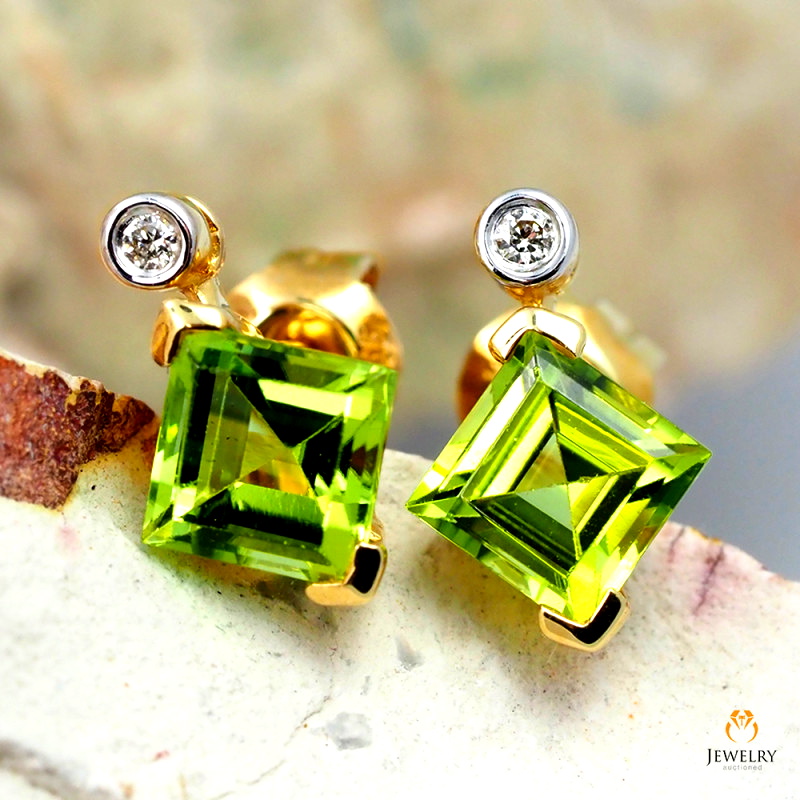 En la imagen de arriba: Pendientes de peridoto facetado.
En la imagen de arriba: Pendientes de peridoto facetado.
Regalos personalizados con la piedra de nacimiento de agosto
Un regalo con una piedra de nacimiento de agosto es una celebración especial de la vida de tu ser querido. Una vez que elijas la gema, es hora de elegir la mejor joya o accesorio con esa piedra.
Aquí hay algunas ideas:
Anillo apilable con piedra de nacimiento de agosto
Collar de piedra de nacimiento con colgante de monograma de su inicial.
Anillo de tungsteno con piedra de nacimiento incrustada
Pendientes con piedra de nacimiento en su forma favorita
Decoración con piedra de nacimiento tallada
Llavero con piedra de nacimiento de agosto
¡Lo que más importa es que tu regalo sea significativo y venga del corazón!
¿Qué piedra natal de agosto adoras?
La espinela y el peridoto pueden parecer diferentes, pero son más parecidos de lo que crees. Ambos representan la luz y la renovación, y se han confundido con otras gemas. Junto con el sardónice, estas piedras natales de agosto ofrecen una gama de posibilidades para celebrar a quienes nacieron al final del verano.
Buscar en el Gemstone Encyclopedia
Subastas relacionadas
Artículos relacionados
Cada persona tiene una piedra preciosa que corresponde a su signo zodiacal. Estas también se conocen como tu Piedra Estelar. Aprende más sobre estas piedras y descubre cuál es tu Piedra Estelar.
10th May 2018
Originalmente, las piedras de nacimiento o gemas se asociaban con un signo zodiacal o el mes de nacimiento de una persona. Descubra cuál es su piedra y vea las que tenemos a la venta.
8th Feb 2021
Gem Rock Auctions ofrece una de las mayores colecciones de piedras preciosas certificadas en línea. Explore esta lista de laboratorios de análisis de piedras preciosas aprobados.
24th Jul 2018
últimos artículos
Las tallas de marfil de palma, también llamadas marfil vegetal, son una alternativa natural al marfil de elefante, extraído éticamente de la nuez de palma de la palmera sudamericana Phytelephas. ¡Aprenda todo sobre el marfil de palma en esta guía!
15th Jan 2026
Las piedras de flores de crisantemo son maravillas naturales que presentan un patrón floral de calcita blanca, celestita o andalucita sobre piedra caliza negra o lutita.
13th Jan 2026
La piedra solar reticulada arcoíris es una variedad de feldespato con tres magníficos efectos ópticos causados por la presencia de diversas inclusiones. Su vibrante colorido y su patrón reticular la convierten en una rara joya de colección.
12th Jan 2026
Categorías de artículos
How To's is where you will find helpful articles from gem Rock Auctions on how to cut gemstones, select gemstones and buy gemstones.
9 Artículos




